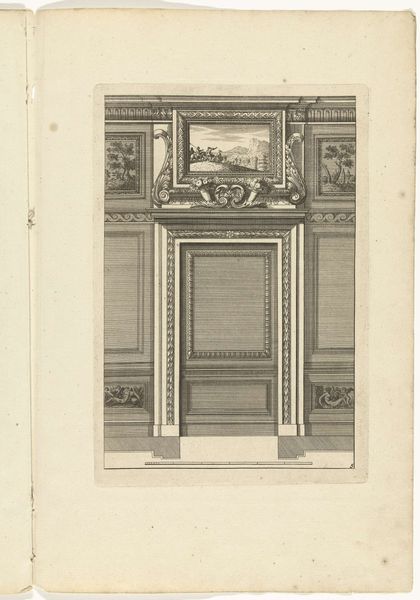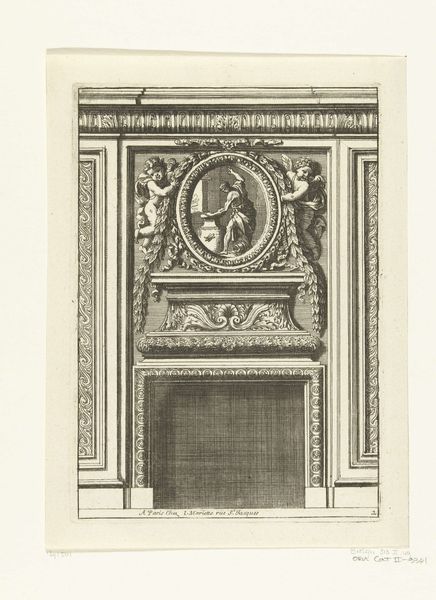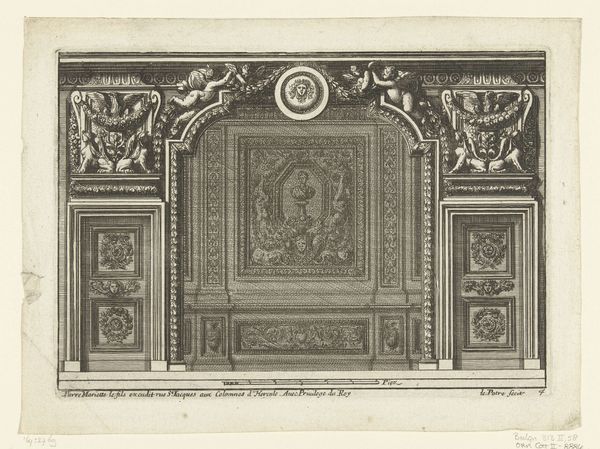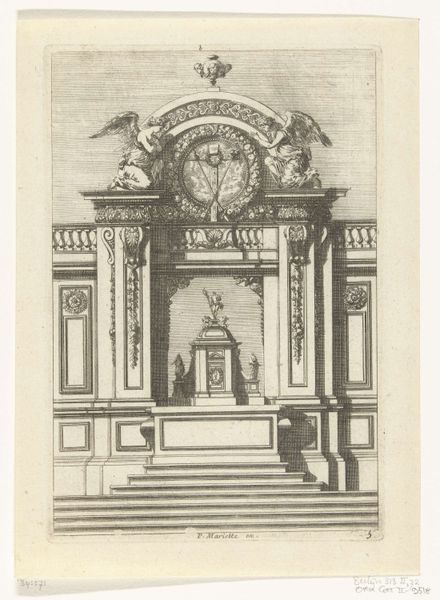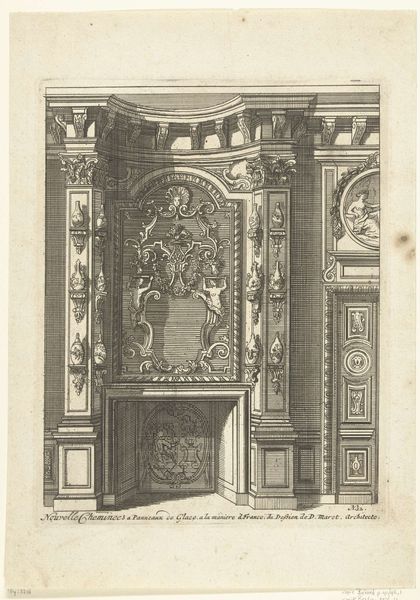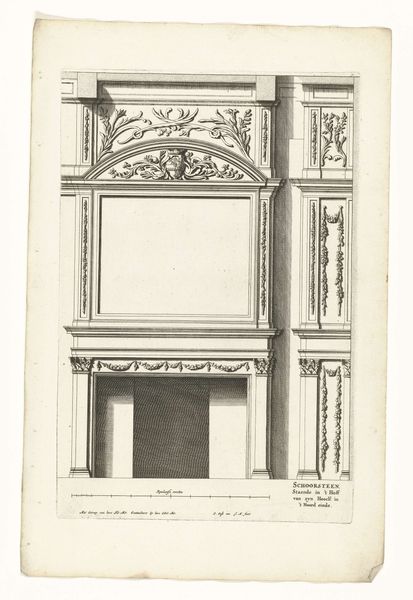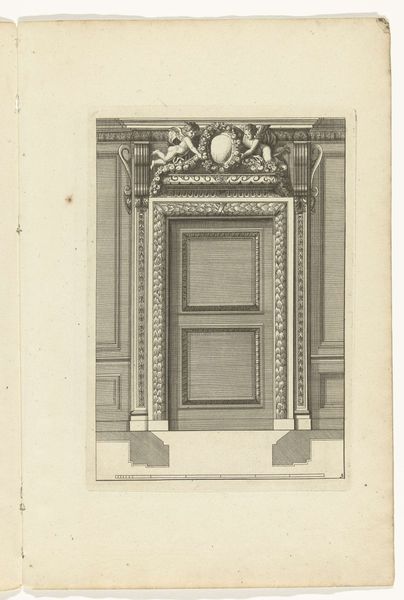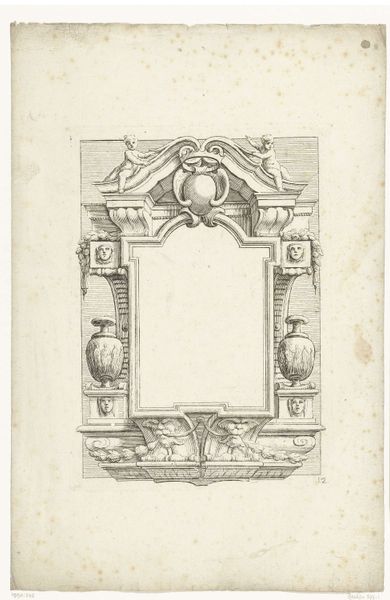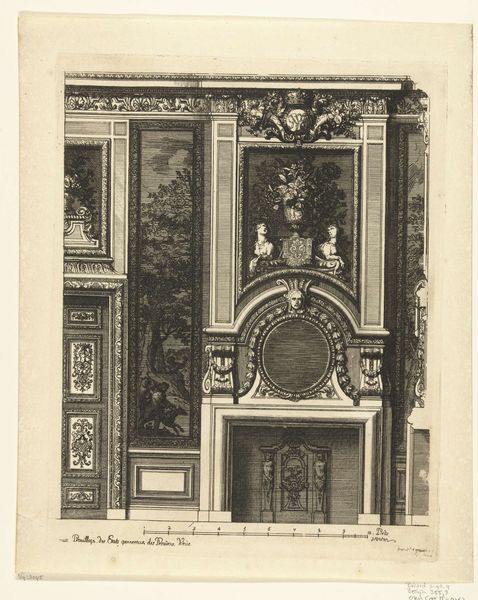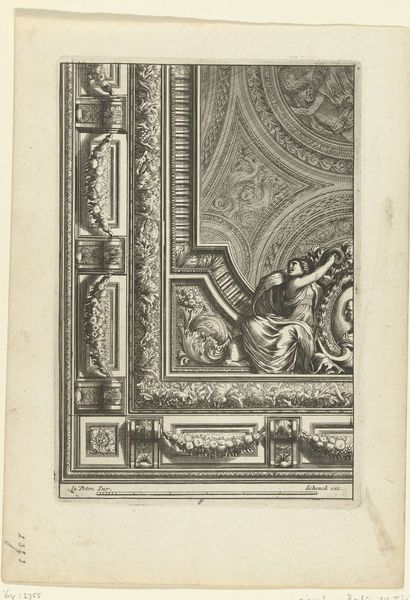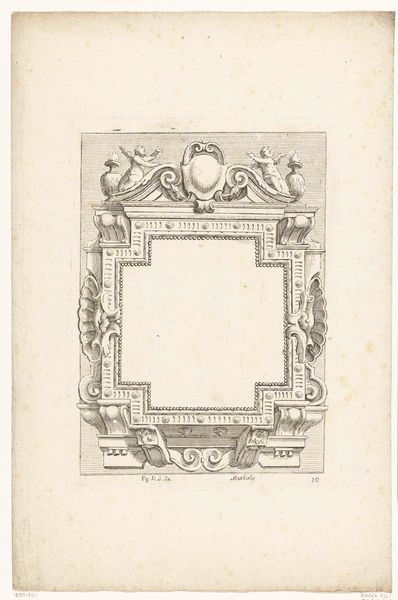
drawing, print, engraving, architecture
#
drawing
#
baroque
# print
#
form
#
geometric
#
line
#
engraving
#
architecture
Dimensions: height 213 mm, width 147 mm
Copyright: Rijks Museum: Open Domain
Curator: Before us is "Deur met paneel met mascaron," an engraving currently residing in the Rijksmuseum, created sometime between 1726 and 1765. Editor: It's all very linear, isn't it? Impeccably precise. The repeated chevrons along the doorframe create this mesmerizing rhythm. But the blank medallion above seems… empty, doesn't it? Curator: Well, let's not forget the context. During the Baroque period, doorways weren't merely functional. They signified transitions, both physical and metaphorical, from one realm to another. And this doorway in particular…it practically screams wealth, status and hierarchy! Editor: Of course. I suppose that mascaron at the door's center suggests this grand entrance serves as a visual warning, too: only those of appropriate standing may enter. How do we read the symbol of that face? Is it an apotropaic mask warding off malevolent spirits or… Curator: Perhaps it served both a decorative and a protective function. You know, the cherubs flanking the medallion are a clue as well. They represent divine blessing and act as guardian spirits, adding another layer of meaning. Editor: Hmm, I see your point. All the classical architectural embellishments definitely point towards status. It’s a theatrical demonstration. Look how the receding lines create depth despite the flatness of the print medium! Curator: The Baroque style revels in dramatic flair, aiming to impress and inspire awe. What appears empty to our eye likely teemed with significance to its original audience. It's not just about form; it's about the societal values it represents. Editor: It’s undeniable how such stylized architectural features can also affect one's psychology: they speak of power. Despite being a black-and-white print, there’s richness created by how lines delineate details, producing depth and volume. Curator: Exactly! These elaborate doorways acted as gateways to experiences…spaces intended for selective engagement, both a welcoming embrace and a warning all at once. A bit of cognitive dissonance. Editor: Very insightful. This discussion illuminated just how effectively form speaks to and shapes social standing, making architecture an art for life's stage. Curator: Absolutely. Delving into those older meanings certainly alters how we approach not only historical art, but ourselves, and the doors we use today.
Comments
No comments
Be the first to comment and join the conversation on the ultimate creative platform.
